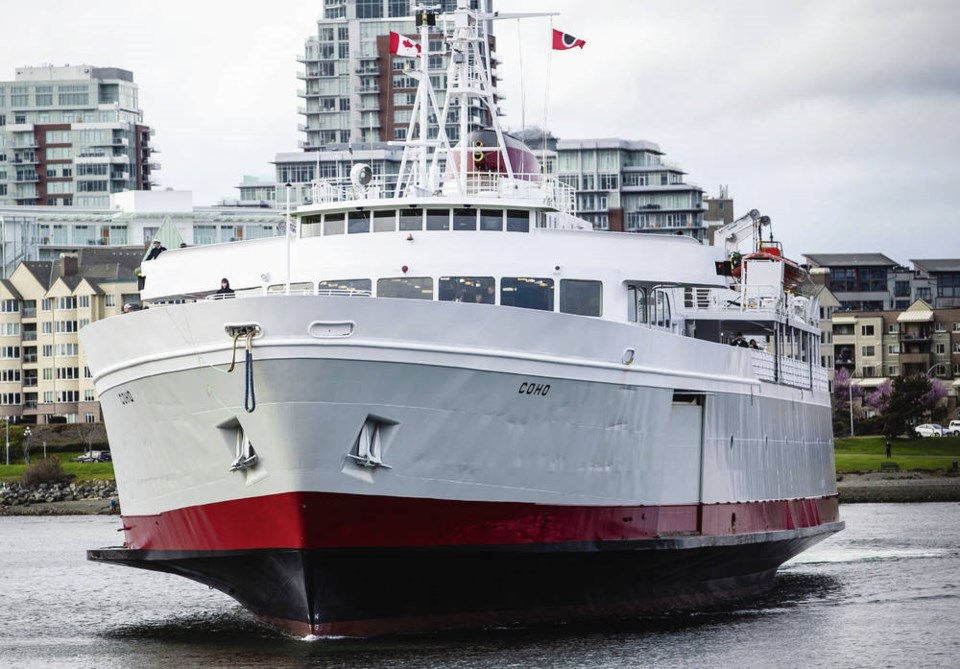When Canada announced Monday that it would open its borders to fully vaccinated Americans as of Aug. 9, David Gudgel was excited.
Perfect, the Clipper Navigation CEO thought. Three weeks. That’s how long it would take to get crewed up and ready to resume high-speed passenger service between Seattle and Victoria.
But hold on. It turned out Ottawa’s announcement doesn’t necessarily apply to marine transportation. Operators of the Clipper, the Coho to Port Angeles and the Sidney-Anacortes ferry — all of them parked by the pandemic — won’t get clarity on that until the feds publish details of the new rules, and that probably won’t happen until Aug. 6-8.
Also, note that the U.S. hasn’t said when it will open its borders to Canadians arriving by land and sea. In fact, the White House announced Wednesday that the ban on non-essential travellers that began in the spring of 2020 would be extended at least until Aug. 21.
Add to that uncertainty over the nuts and bolts of how new border-crossing rules will be applied, and marine operators remain at sea. (Or not, as the case may be.)
Gudgel went from elated to deflated. Clipper, which dropped from 200 employees to eight due to the pandemic, inched back into service at the end of May with service to Washington’s San Juan Islands — but it can’t afford to really gear up again until it knows for sure when it may resume sailing to Victoria, he says. Were it to get the go-ahead Aug. 9, it would aim to be back in business by Labour Day. “We need a firm date and about three weeks.”
It’s the Canadian rules, not the U.S. ones, that really matter to Clipper, Gudgel says, as 85 per cent of its customers are Americans going north.
However, the question of when the U.S. begins admitting Canadian tourists by water (they can already go by air) definitely matters to the Black Ball Ferry Line, which owns the 115-vehicle, 1,000-passenger Coho. “That’s 30 per cent of our business,” says company president Ryan Burles of Victoria.
There’s also the question of whether the U.S., when it does open its border, will mirror Canada’s new requirement that travellers provide proof of double-vaccination, plus a recent COVID test.
As it is, Burles figures the cost and logistics of Canada’s COVID-test requirement could lead some of Black Ball’s traditional American customers to stay in the States. In normal times, Victoria is a popular day-trip destination for Port Angeles residents who, for the $39 US round-trip as Coho walk-ons, can spend the afternoon shopping on Government Street (or going to the dentist) and still be back home by bedtime. But if the cost of a COVID test — about $100 US in Port Angeles — isn’t covered by health insurance, suddenly that day away is a lot more expensive. “Day-trippers aren’t going to be taking the boat to come across,” Burles says.
He’d like to know how long the test requirement will stay, and how Canada plans to verify that Americans have been fully vaccinated. Will they use the ArriveCAN app?
If Black Ball gets green lights in both directions — the U.S. welcoming Canadians after Aug. 21 and Canada saying OK to Americans Aug. 9 — it would take at least a week before the Coho begins shuttling between Port Angeles and Victoria. That would lead into snowbird season, when Canadians historically head for Arizona.
Washington State Ferries is in a different boat (as it were) altogether. It says that due to a systemwide crew shortage and a lack of working vessels (the MV Wenatchee got knocked out by a fire in April) it likely can’t resume its Sidney-Anacortes run until the end of September.
The Washington system was already having trouble maintaining the Sidney-Anacortes service before shutting it down for what was supposed to be its usual three-month winter hiatus at the end of 2019. For years, there were two ferries that could spell each other off on the route, but when the MV Elwha gave up the ghost in summer 2019, that left only the 124-car, 1,100 passenger MV Chelan — and when it, too, broke down that November the Sidney run had to be abandoned for four weeks.
- - -
To comment on this article, write a letter to the editor: [email protected]



